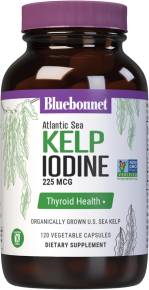Dog Food Diet Trends
In 2018, Americans spent nearly $33 billion on pet foods and treats, an increase of 5 percent ($1.5 billion) over the previous year.
Choosing a Grain-Free Dog Food
According to pet health consultant Mary Straus, “The biggest trend in dog food for the last few years has been grain-free foods, which seem to have caught on like wildfire.”
When grain-free foods were first introduced, most had higher protein, higher fat, and lower carbohydrate levels than traditional dog foods, Straus said. That is no longer the case, as many manufacturers now replace grains with other starchy carbohydrates such as potatoes, sweet potatoes, and tapioca.
“When the grain-free trend started, the higher protein content came from meat,” Straus said. “Now companies pump up the protein in their grain-free foods with plant proteins, predominantly from legumes such as beans, chickpeas/garbanzo beans, lentils, peas, and pea protein.”
For best results, Straus recommends rotating between two or three different brands of food containing different protein sources.
Homemade and Raw Diets for Dogs
Another trend in pet food is the feeding of home-prepared diets, either raw or cooked, containing ingredients labeled for human consumption. Popular books describing home-prepared diets for dogs and cats simplify the process, but only a few provide adequate amounts of calcium. For recommended titles, visit Straus’s website, DogAware.com.
Supplements for Dogs
Glucosamine (sold alone or combined with chondroitin or other ingredients for joint health) is the best-selling supplement for dogs, followed by fish oil for cardiovascular health, osteoarthritis, and canine skin allergies. Probiotics (supplements containing live beneficial bacteria), prebiotics (foods that support those bacteria), and pet multivitamins and digestive enzymes are also popular.
CBD Oil for Dogs
Thanks to changes in the legal status of cannabis, the fastest growing herbal supplement for dogs is CBD (cannabidiol) oil, which is made not from marijuana but from industrial hemp, which is very low in the psychoactive chemical tetrahydrocannabinol, or THC.
In a 2016 survey by the American Holistic Veterinary Medical Association, 631 pet owners who used CBD oil for their dogs reported that the animals experienced relief from pain, anxiety, seizures, muscle spasms, thunder phobia, skin conditions, and other symptoms. Because CBD oil is a relatively new product, experts recommend consulting with a knowledgeable veterinarian and using organically grown, lab-tested products that don’t contain additional ingredients.




